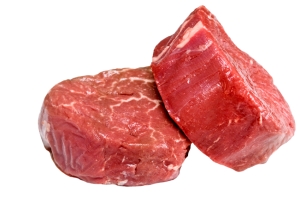With a growing number of pet food options available in the market today, it can be overwhelming to decipher the differences. As a pet owner or as a pet food manufacturer, one of the most important things to understand is what goes into the labeling of pet foods. Regulations vary, but it is up to the State Feed Control Officials to truly regulate what goes into pet food. However, there is a recognized standard that most go by that has been put together by the Association of American Feed Control Officials (AAFCO). AAFCO itself does not regulate or approve products, but it establishes standards for complete and balanced foods. These are the generally accepted guidelines that most companies start with.
These AAFCO standards for a complete and balanced pet food require that “the pet food contain every nutrient that we know the pet needs as specified in the AAFCO Dog Food (or Cat Food) Nutrient Profiles”. These are based on the recommendations of the National Research Council (NRC) for dogs and cats. There is another option for pet foods to pass animal feeding trials using AAFCO procedures, if a product is designed for a particular stage. This allows formulation of products that may or may not meet AAFCO nutrient profiles, such as some that may be used by veterinarians for treatment of particular conditions where the diet needs restricted protein, sodium, etc.
Pet food manufacturers choose ingredients that will let their food reach or exceed these requirements. There are many factors to consider when choosing ingredients, including cost, as well as palatability. Many pet food manufacturers choose to use by-products of other industries as their protein sources. These by-products can be made more usable through processing with heat, or sometimes hydrolysis with enzymes. However, these may not always start out as extremely palatable to pets. In these cases, companies may use enzymes to fully hydrolyze a meat source, which they then coat the kibble with after processing. This improves palatability of the final product. Amylase enzymes may also be used in foods with higher carbohydrate content to help reduce viscosity.
Enzymes can also be beneficial to foods which use fresh meats as their protein sources. These meats need to be broken down in order to be formed into kibble. Enzymes can do this without any chemical additives. Some meats may also cause issues with viscosity in machines, in which case the addition of some enzymes can help material flow better, helping optimize the production process.
In addition to enzymes for pet food processing, some companies are using them as a functional ingredient to aid digestion. In these cases, the enzymes must be added at the end stage in a coating on the kibble. This is because the enzymes will otherwise be destroyed by the heat of the extrusion process. However, enzymes and/or probiotics added in a coating at the end of the kibble-making process can work as a functional dog-or cat- food ingredient which will provide benefits to the pet’s digestive health.
If you have any questions regarding the use of enzymes in pet food, please send us an e-mail! Jamie@specialtyenzymes.com

